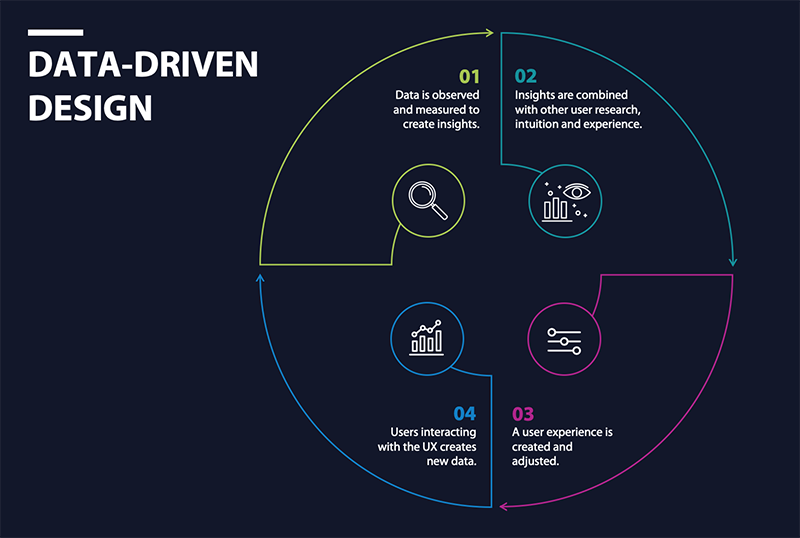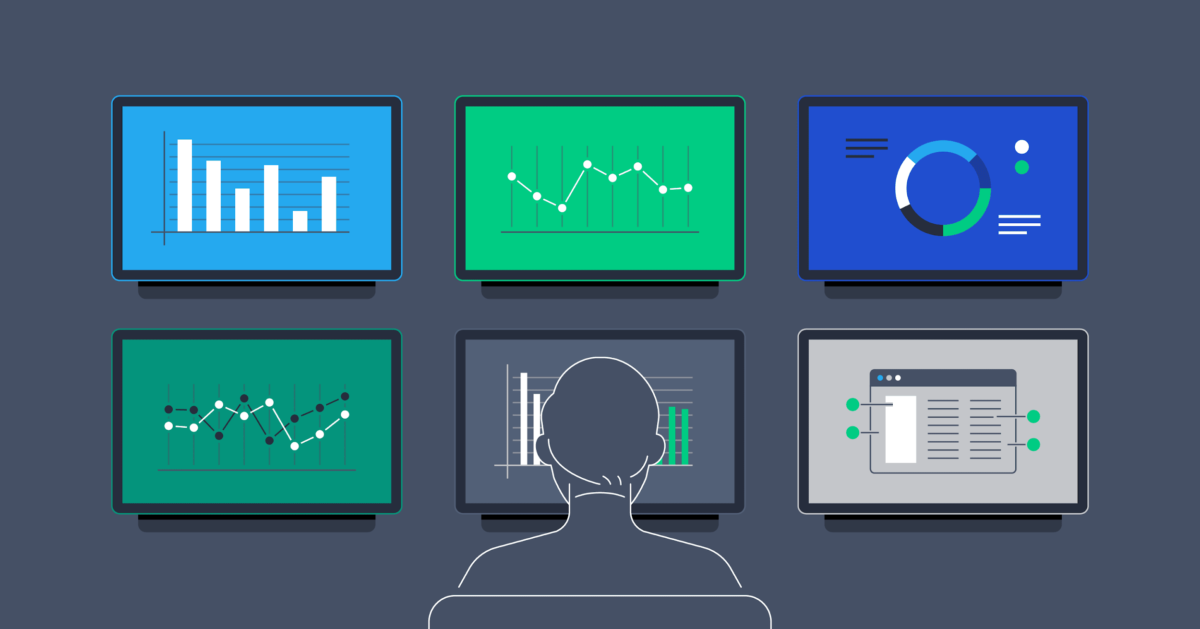While developing or creating something technological, developers often focus on following a guideline or a proper plan of action. The reason for doing so is to minimize the chances of errors and confusion during the process. But even before creating something, there are certain elements and factors that the developers might depend on or utilize in order to get help. Data is one of the key components or factors that help creators make important decisions and follow the developmental flow.
Data in this regard can be anything: information or knowledge related to the topic, data related to market research or similar products, or data related to the users and their preferences related to a product or service. In this article, we will be focusing on the third type of data mentioned.
In order to provide a personalized user experience, developers often opt for data-driven decisions while developing something. For instance, developers will focus on user needs and demands while creating a website, a mobile app design in San Jose, or anything similar.
So without any further delay, let’s explore the fields of user experience and data-driven design to understand how the latter facilitates and adds value to the former terminology.
What Is The User Experience?
User experience, commonly known as UX design, is the process of developing a product or service based on the demands, needs, and limitations of users or consumers. In other words, user experience defines how users interact with products and services provided by businesses and companies.
The Three Types Of Data That Influence The Designing Procedure Of The User Experience
Although we will be focusing on data-driven design in this article, it is still essential to know the types of data that are developed and utilized while creating the UX design. This information will help differentiate between the types and understand them in depth. The type includes
- Data-Inspired Designs.
- Data-Driven Designs.
- Data-Informed Designs.
- Data-Inspired Designs
In this type of design, consumer data is only considered a source of inspiration for the designers. However, the decision is taken or made purely on the basis of intuition.
- Data-Driven Designs
In this type of design, heavy importance is given to user data, as designers rely on the information to decide what to design and develop.
- Data-Informed Designs
Data-informed designs usually consider consumer data as one of the sources or variables for making decisions. This means that developers do not completely rely on user data and include other factors like intuition and product research as well.
What Is Data-Driven Design?
As mentioned earlier, the definition of data-driven design is explained as following the practice of designing different products, systems, and services on the basis of user data only. This means that the process of making a decision will not include any sort of personal preferences or intuitions from the developer’s side.
The process of data-driven design includes gathering user data from different sources through different methods and representing it in an easy manner to make decisions and start the designing procedure.
The Importance Of Data-Driven Design For Personalized UX
Until now, we knew that the user experience, or UX design, of a product or service mattered a lot. Your products will not be utilized or consumed by users if they do not serve the purpose that they are looking for. Hence, it is crucial to keep the user’s needs and demands in mind while developing anything.
With the help of data-driven design, this step has become a lot easier for developers. The process of data-driven design for user experience helps developers consider the current problems of the users, what they are looking for in the market, and what they expect from your product. All of this information helps in designing valuable and helpful products that increase user engagement, consumer consumption, and sales generation.
The Types Of Data Utilized For Making Data-Driven Designs
Just like there are certain types of data that facilitate the process of decision-making, there are two types of data that are utilized for making data-driven decisions. They are
- Quantitative Data.
- Qualitative Data.
- Quantitative Data
Quantitative data is known as data that can be measured in numerical numbers easily. This quantifiable and measurable nature of quantitative data provides designers with unbiased perceptions of user behavior and interactions. It helps designers spot preferred user trends and patterns.
For instance, with the help of quantitative data, designers can detect which page of the website gets the most visitors and which page does not. They can further improve the areas of weakness.
- Qualitative Data
Qualitative data, on the other hand, is data that is not numerical. This kind of data is based on the subjective opinions of the users, their feelings, and their perceptions regarding something. UX designers use qualitative data to understand the needs and preferences of users.
For instance, with the help of qualitative data, designers can analyze data through user interviews and surveys to understand the pain points of users and what they are looking forward to in a mobile app design for San Jose products or services.
Useful Methods Of Collecting Data To Make Data-Driven UX Design Decisions
Since data-driven decisions matter a lot for creating personalized and user-friendly UX designs, there are multiple methods that help designers and developers collect data in a meaningful way. Some of these methods belong to quantitative data, whereas some of them belong to qualitative data. The list of these methods is mentioned below.
Methods Of Collecting Data Based On Quantitative Data-Driven Designs
- Analytics data.
- Usability test method.
- Heat maps.
- A/B testing.
- Multivariate testing.
- Usage analytics.
Methods Of Collecting Data Based On Qualitative Data-Driven Designs
- User interviews.
- Survey method.
- Focus groups.
- User feedback.
An Ultimate Guide To Conducting And Implementing Data-Driven Design Practice
People often get confused as to how developers implement the user data that they gather after research or how the whole process of practicing data-driven decisions works for developing user-friendly UX designs. Well, there are some steps that the developers follow in order to make data-driven UX designs. We will review these steps one by one.
- Identify The Goals And Objectives
- Collecting Data Through Research Methods
- Maintaining, Presenting, And Analyzing Data
- Identify The Patterns
- Making Data-Driven Decisions
- Utilizing Data For Guidance Throughout The Process
- Identify The Goals And Objectives
The first step in conducting the procedure of data-driven design decision-making is setting clear goals and objectives. As a developer, you should know what kind of information and user data you are aiming to gather with the help of the procedure.
You should also be clear about the method of data collection you will opt for. If it is a quantitative method, then you should keep some measurable goals in mind. If it is a qualitative method, you should keep enough themes and patterns as part of your goals.
- Collecting Data Through Research Methods
The next step in this process includes collecting user data through different research methods. Since you have already decided on the method of user data collection, this step will only ask you to practically implement and start the process.
There is a misconception regarding the selection criteria for research methods. People often think that developers and designers can only opt for a single method of data collection. In reality, this is not the case. The majority of UX designers consider a mix and match of research methods so that they can have authentic as well as diverse user data to utilize.
- Maintaining, Presenting, And Analyzing Data
Once UX designers finish the data collection process, they move forward with organizing, presenting, and analyzing the data with their fellow team members. Different methods, like affinity mapping data analysis, other analytical tools, and visual representation of data in terms of graphs and charts, help developers understand the user data in easier terms.
- Identify The Patterns
Once the data is visually presented in an understandable manner, the developers move on to identifying patterns in the data. This helps them get deeper insights regarding user behavior, preferences, areas of strength, and weaknesses.
- Making Data-Driven Decisions
Now comes the stage in which UX designers make data-driven decisions based on the user data they have collected and analyzed. They use user feedback, numerical data, and other resources to design products and services in a way that meets the needs and demands of consumers.
- Utilizing Data For Guidance Throughout The Process
As we know, user data is the basis of data-driven designs. UX designers and developers continuously try their best to iterate and refine the data in order to make changes to the products and services.
Bottom Line: How To Create A Data-Driven Design For Personalized UX
The importance of creating a user-friendly and easy-to-learn user experience is undeniable. Developers pay their utmost attention to developing functional as well as creative UI/UX designs for websites and mobile applications. It is a known fact that developers responsible for mobile app design in San Jose also make sure to provide a top-quality user experience. It is high time for developers to polish their skills and stay connected to the latest trends revolving around UX design for their growth and progress.
- How To Create A Data-Driven Design For Personalized UX - August 22, 2023
![]() Give feedback about this article
Give feedback about this article
Were sorry to hear about that, give us a chance to improve.







